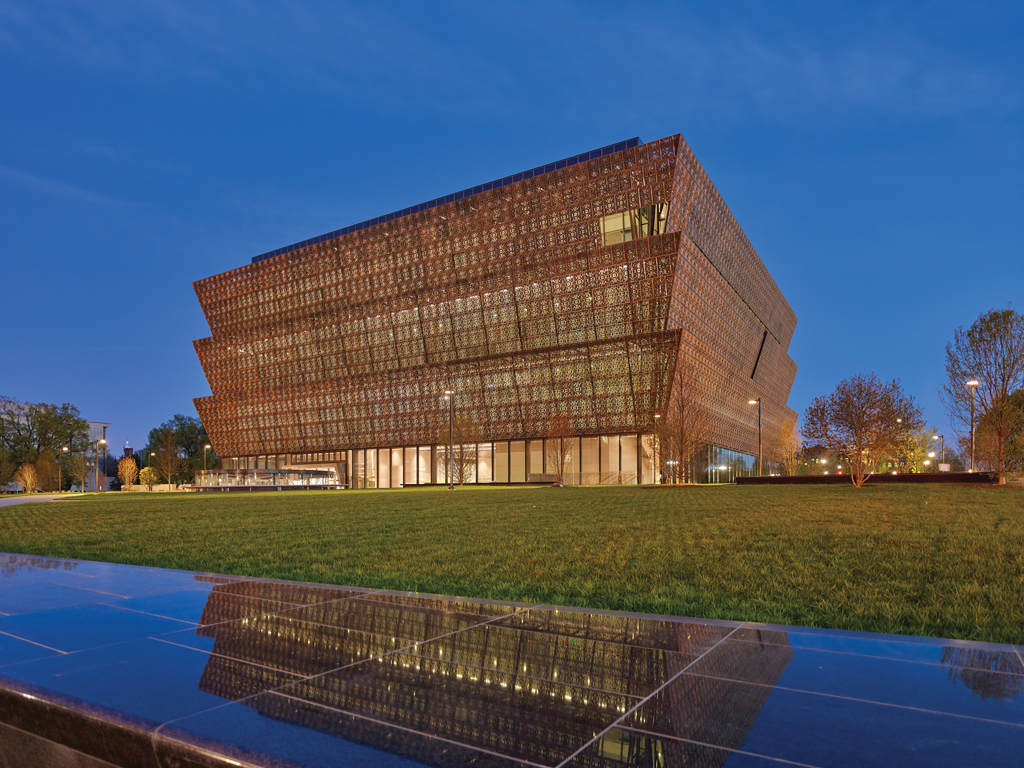To receive Morning Links in your inbox every weekday, sign up for our Breakfast with ARTnews newsletter.
The Headlines
DEMONSTRATION. Over the weekend, protestors demonstrated outside the National Museum of African American History and Culture (NMAAHC) in Washington D.C., in a show of growing concern over the Trump administration’s targeting of the institution, reports the New York Times. In March, President Donald Trump issued an executive order attacking the Smithsonian Institution’s promotion of “narratives that portray American and Western values as inherently harmful and oppressive.” He specifically took the Smithsonian’s NMAAHC to task. Saturday, several hundred protesters voiced support for the NMAAHC, whose director, Kevin Young, departed soon after Trump’s order, though he was on leave before that, fueling questions. Meanwhile, the Washington Post reports that the Smithsonian’s National Museum of African Art has delayed a planned exhibit due to open later this month and coinciding with the June WorldPride celebration. The museum cited its “current budgetary situation.”
Related Articles

BUDDHA GEM SALE POSTPONED. The Indian government has threatened legal action against a planned Hong Kong sale of gems linked to Buddha’s mortal remains, leading Sotheby’s to postpone the auction, reports Reuters. Indian officials also demanded the return of the circa 240-200 BCE relics known as the Piprahwa Gems of the Historical Buddha Mauryan Empire, Ashokan Era. The gems are “inalienable religious and cultural heritage of India and the global Buddhist community. Their sale violates Indian and international laws, as well as the United Nations conventions,” stated a May 5 letter from the Indian government. It added that the auction “offends the sentiments of over 500 million Buddhists worldwide.”
The Digest
A Republican-led House committee has proposed giving $257 million in federal funding to the John F. Kennedy Center for the Performing Arts. The allocation would be about six times more than its usual government funding of $43 million. Democratic Representative Chellie Pingree of Maine responded in a statement that “we need transparency on how this money would be spent and assurance it’s not being used to reward loyalty or bankroll pet projects under the guise of cultural investment.” [The New York Times]
UK Prime Minister Keir Starmer aims to dismantle the Department for Culture, Media and Sport, and split it between the business and education departments, as well as the Treasury, reported the Sunday Times. The move is part of a government overhaul, and the Art Newspaper has looked into some of the possible consequences, with some experts concluded it “would be a mistake.” [The Sunday Times, The Art Newspaper]
Frank Lloyd Wright’s historic Price Tower was sold to McFarlin Building, LLC, for $1.4 million as part of a Chapter 7 bankruptcy auction. This, after years of legal disputes involving its previous owners, Copper Entities, over the landmark in Bartlesville, Oklahoma. [News 9]
A court has stopped the restitution of a contested Egon Schiele drawing in the collection of the Art Institution of Chicago, which had been ordered by a judge last month. The museum appealed that order to surrender Russian War Prisoner (1916), and an appellate judge has issued an emergency stay to pause the return to the heirs of Fritz Grünbaum. [Artnet News]
The Kicker
HUMA BHABHA ENCOUNTERS GIACOMETTI. Sculptor Huma Bhabha sat down with the Guardian while installing her exhibition that opens tomorrow at the Barbican in London, alongside 10 sculptures by Alberto Giacometti. “I was nervous of course to be in the same room with Giacometti,” the Pakistan-born artist said. “But the works seem to be compatible, they’re enjoying each other’s company.” “Encounters: Giacometti”, on view until August 10, is part of a series organized with the Giacometti Foundation, pairing contemporary artists with the modern Swiss sculptor. The show “emphasizes the shared sensibilities between the two artists: angry, angsty figures that evoke a sense of ruin, destruction and existential anxiety; rough, urgently worked surfaces; stretched, fragmented and dismembered body parts – harbingers of desolation in a horrible reality,” writes Charlotte Jansen. After all, as Bhabha points out, this “is the world we live in.”

